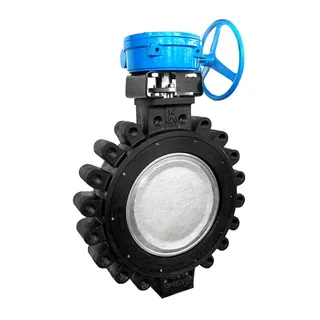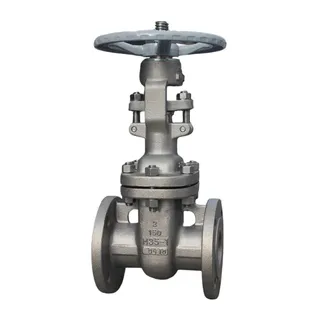In industrial production, ball valves, as a common type of valve, are widely used in various pipeline systems to control the flow of fluids. However, many users often ignore the importance of sealing performance during installation and use, leading to various sealing problems, which not only affect production efficiency but may also bring potential safety hazards. This article will deeply explore the key elements of ball valve sealing performance and provide effective maintenance strategies to help users better understand and manage the sealing performance of ball valves.
The sealing performance of a ball valve is directly related to whether it can effectively control the flow of fluids. If the sealing performance of the ball valve is poor, it will cause fluid leakage, not only wasting resources but also possibly causing environmental pollution and even safety accidents. Therefore, ensuring the sealing performance of ball valves is the key to ensuring the safety and efficiency of industrial production.
A ball valve mainly consists of the valve body, ball, valve seat, valve stem, and sealing rings. The ball valve controls fluid flow by rotating the ball, and its sealing performance mainly depends on the tight fit between the ball and the valve seat. Therefore, to ensure the sealing performance of the ball valve, multiple key elements must be considered. These elements are interrelated and jointly determine the sealing effect of the ball valve.
During installation and construction, the protection of the sealing surface and seat ring of the ball valve is crucial. If attention is not paid during installation, the sealing surface of the ball valve may be damaged, resulting in sealing failure. For example, welding slag or sand particles may get stuck between the ball and the seat ring, damaging the sealing performance of the ball valve. Therefore, during installation, appropriate protective measures must be taken to prevent damage to the sealing surface of the ball valve.
The choice of sealing materials for ball valves has a direct impact on sealing performance. The sealing materials of ball valves need not only good corrosion and wear resistance but also appropriate elasticity and stiffness. If the sealing material is too soft, it will affect its self-cleaning ability; if too hard, it is easy to crack. Therefore, choosing suitable ball valve sealing materials is the key to ensuring sealing performance.
The reasonable matching of sealing pair materials is equally important. Different sealing pair materials have different hardness, toughness, and corrosion resistance. For example, metal-to-metal sealing pairs have high hardness and good wear resistance, but in some media, corrosion problems may occur; ceramic materials, although extremely hard and highly wear- and corrosion-resistant, are brittle and easily damaged by impact. Therefore, selecting suitable sealing pair materials and ensuring proper matching is an important factor in improving the sealing performance of ball valves.
The dimensional accuracy of key components such as the ball and valve seat directly affects the sealing performance of the ball valve. If the roundness of the ball is insufficient, the diameter deviation is too large, or the inner diameter of the seat is inaccurate, the ball and seat cannot fit tightly, resulting in leakage. Therefore, ensuring the dimensional accuracy of key components is the basis for guaranteeing sealing performance.
The surface roughness of the sealing surface of the ball valve also has an important impact on sealing performance. A surface that is too rough will cause poor sealing, while a surface that is too smooth may affect the micro-level engagement between sealing materials. Generally speaking, the surface roughness of the sealing surface of a ball valve should be controlled within an appropriate range to ensure a good sealing effect.
If the assembly sequence of the ball valve is incorrect, it may cause uneven stress or deformation of components, thus affecting the sealing performance. During assembly, the preload applied to the sealing pair should be moderate. Too little preload cannot ensure tight contact between the sealing surfaces, causing leakage; too much preload may cause excessive wear, deformation, or even damage of the sealing surface, shortening the valve's service life and affecting sealing performance.
The properties of the medium and operating conditions also have a significant impact on the sealing performance of ball valves. If the medium is corrosive, it will corrode the sealing surface of the ball valve, causing pits and roughness, which destroy the flatness and smoothness of the sealing surface, resulting in sealing failure. In addition, changes in the medium's temperature and pressure also affect sealing performance. In high-temperature environments, the properties of sealing materials may change, reducing sealing force; under high pressure, the sealing pressure between the ball and seat increases, and if the sealing material's compressive strength is insufficient, it may collapse, causing leakage.
Frequent opening and closing operations will cause continuous friction and wear on the sealing pair of the ball valve. With increased use, the wear of the sealing surface becomes more serious, leading to decreased sealing performance. In addition, the opening and closing speed of the ball valve also affects sealing performance. If the valve operates too quickly, water hammer may occur, impacting and damaging the sealing surface; if too slowly, the sealing surface remains in a semi-open or semi-closed position for long periods, making it vulnerable to erosion and wear by the medium.
To ensure that the ball valve can maintain good sealing performance in actual applications over time, we must also master effective maintenance strategies. The following sections detail how to extend the service life of ball valves and maintain optimal sealing performance through proper maintenance measures.
Regular inspection of the sealing performance of ball valves is key to preventing sealing problems. Before and after each operation, or every six months, a small amount of grease should be added to the valve stem and sealant injection port. If leakage or incomplete sealing occurs, an appropriate amount of sealant should be injected. It is important to note that the viscosity of the sealant is very high; if sealant is added to valves that do not leak, it may affect the self-cleaning function of the ball surface and even backfire by bringing small debris such as sand particles into the seal, causing leakage.
In an emergency, if the ball valve leaks, an appropriate amount of sealant can be temporarily injected into the upstream sealing surface to relieve leakage. However, this method can only temporarily solve the problem and cannot completely eliminate the sealing issue. If the sealing surface and seat ring of the ball valve are seriously damaged, the sealing surface and seat ring should be replaced when necessary.
Different ball valves with varying sealing performance and structures are suitable for different situations. For example, in the West-East Gas Transmission pipeline, fixed pipeline ball valves with bidirectional sealing should be used as much as possible. In this way, even if the upstream seal is damaged, the downstream seal can still function. For cases requiring absolute reliability, a forced-sealing track ball valve should be selected, although its price is higher.
When assembling ball valves, installation must be carried out according to the specified sequence and method to ensure even stress distribution and avoid deformation. During operation, the opening and closing speed of the ball valve should be controlled reasonably according to the nature of the medium and operating conditions to avoid damage to the sealing surface caused by operating too quickly or too slowly.
Next, we will analyze several real-world cases to explore the causes and solutions of ball valve sealing problems, helping readers better understand and apply the maintenance strategies mentioned above.
Damaged Gasket: In actual applications, the gasket between the left and right valve bodies of a ball valve may be damaged, resulting in a loss of sealing function. At this time, the gasket needs to be replaced, ensuring proper alignment and correct size, and then tightening the bolts.
Stem Leakage: If external leakage occurs at the valve stem, first check whether the gland is properly tightened and if the bolts are loose. If the compression is insufficient, the bolts should be retightened. If the problem persists, the packing may be damaged and needs to be replaced. Generally, PTFE packing is used, and it must be installed evenly before tightening the gland.
Internal Leakage: Internal leakage of the ball valve (leakage through the sealing ring) is usually caused by the medium scratching the sealing surface of the ball, resulting in gaps when the ball contacts the seat. In this case, the entire valve should be disassembled, the sealing ring replaced, and the valve reassembled.
The sealing performance of ball valves is a key factor in ensuring the safety and efficiency of industrial production. By selecting appropriate sealing materials, ensuring the dimensional accuracy of key components, controlling surface roughness, assembling and operating correctly, and conducting regular inspection and maintenance, the sealing performance of ball valves can be effectively improved and their service life extended. In practical applications, suitable ball valve types should be selected according to different conditions and media, and corresponding maintenance strategies should be adopted to ensure that the sealing performance of ball valves remains in optimal condition.



